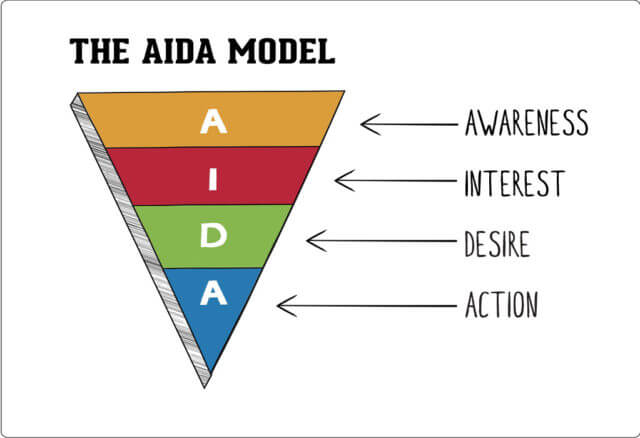Let’s explore some effective content writing formulas that can elevate your content. Whether you’re a seasoned marketer or a budding writer, these strategies can help you create compelling and impactful content.

FAB
This formula will have 3 parts:
- F-Feature: These are the characteristics of the product or service that you want to advertise.
- A-Advantages: Highlight the outstanding advantages of your product or service compared to competitors.
- B-Benefits: Focus on the benefits that your advertised product or service brings to customers. This is the crucial element. By emphasizing the benefits, you can effectively capture the attention of potential buyers.
After all, according to buyer psychology, their benefits matter more than anything else.
FAS
- P-Problem: Address the issues or situations that customers are currently facing.
- A-Agitate: Delve deeper and intensify the problem.
- S-Solve: Present a solution to resolve that problem, which is the product or service you are advertising.
This is also one of the common content ad formulas that we often encounter in advertisements.
BAB
- B-Before: Refers to the customer’s situation before using the product or service.
- A-After: Describes the customer’s situation after using the product or service.
- B-Bridge: The bridge between “Before” and “After” is the product or service itself. This emphasizes the benefits that the product or service brings to customers.
This is one of the high-impact content writing formulas widely used in everyday advertisements. It is commonly applied in content for beauty products, spa, hair services, and more.
Learn more: Running Facebook Ads for Dental Clinic is currently trending
4C
- C1- Clear: Content Marketing must be clear and straightforward.
- C2- Concise: The message should be succinctly delivered.
- C3- Compelling: Content needs to be persuasive.
- C4- Credible: Provide specific evidence or references in your content.
This is not a formula for the structure of content like the high-impact content writing formulas mentioned earlier. Instead, it highlights the essential elements needed in a content piece. In this case, a top-notch content piece fulfills all four of these criteria.
4U
- U1 (Useful): Refers to content that is practical and beneficial.
- U2 (Urgent): Indicates a sense of urgency or immediate importance.
- U2 (Unique): Highlights distinctiveness or originality.
- U3 (Ultra-specific): Emphasizes brevity and precision.
This formula bears resemblance to the 4Cs and effectively outlines essential elements for creating compelling ad content. In practice, it suits topics related to current trends and hot discussions.
A FOREST
- A (Alliteration): Refers to the repetition of initial consonant sounds in a sequence of words or phrases.
- F (Facts): Involves presenting verifiable information or truths.
- Opinions: Expresses viewpoints and personal stances.
- R (Repetition): The deliberate reuse of words or phrases for emphasis.
- E (Examples): Provides specific instances or evidence.
- S (Statistics): Involves creating tables or charts to display numerical data.
- T (Threes): Repeating something three times to create impact and enhance memorability.
This formula bears resemblance to a high-level process for creating compelling Content Ads. However, it is not suitable for writing ad content on social media platforms or websites. Instead, it is most effective when applied to construct a Landing Page for product promotion.
AIDA
- A (Attention): The first step is to grab the reader’s attention.
- I (Interest): Next, create interest in your product or service.
- D (Desire): Address pain points or generate needs in the customer.
- A (Action): Call for action—seal the deal.

For marketers, the AIDA formula is considered a classic advertising template. It is commonly used in both online sales and promotional events. In the online realm, this formula finds application in a majority of ad campaigns. On websites, it serves as an essential foundation for product descriptions.
APP (Agree, Promise, Preview)
One of the effective methods to create compelling content is the APP approach.
This attention-grabbing content writing technique was popularized by Brian Dean in his Copywriting Case Study. Its effectiveness is undeniable.
The APP method is straightforward:
- Agree: Acknowledge and agree with the reader’s problem.
- Promise: Promise to address their issue.
- Preview: Give them a glimpse of the content you’ll cover in your article.
This approach is incredibly useful when you’re stuck for ideas. By filling in the blanks, you’ll instantly have a captivating opening.
5 Obstacles Formula
- I don’t have enough money.
- I don’t have time.
- I don’t like it.
- I don’t believe it.
- I don’t need it.
Content that addresses these obstacles helps overcome customer objections. These are often the initial responses when unexpectedly introduced to a new product or service.
4A
The 4A model is built upon the pioneering AIDA model, with the following writing formula:
- Aware – Recognition
- Attitude – Mindset
- Act – Action
- Act again – Repeat action
Modern readers no longer want to consume content that merely regurgitates information from various perspectives, making it challenging for them to make purchasing decisions.
Therefore, action and repeated action are two crucial points in the 4A model.
Brand attitude and brand recognition are also emphasized more, allowing brands to create their own distinctive and impressive identity.
5A
However, since the Internet has become an indispensable part of life, customer behavior has undergone significant changes, rendering the 4A model inadequate for describing their purchasing journey.
The “father” of modern marketing, Philip Kotler, based on the 4A model, has developed a specialized 5A model for the digital age.
This model comprises five stages:
- Awareness: Recognizing the brand.
- Appeal: Attracting interest.
- Ask: Seeking information.
- Action: Taking action (such as making a purchase).
- Advocate: Becoming a brand advocate.
Crafting effective content using the 5A model has quickly become a transformative approach in the world of marketing, benefiting both marketers in general and copywriters in particular.
While this model is ideal for the Marketing 4.0 era, it’s important to note a key difference between the 5A model and the traditional AIDA or 4A model: the 5A model doesn’t strictly require steps to occur in a specific order.
You can omit certain steps or even reverse the order (e.g., ADIA) to maintain flexibility in your writing structure while ensuring quality.
In today’s complex customer journey, influenced by micro-moments, customers may jump directly to the “Action” step without following any prescribed sequence.
However, achieving this flexibility requires brands to uphold product credibility, deliver authentic content, maintain a competent sales team, and provide responsible after-sales support.
Learn more: Facebook Ads Content Common Mistakes
Using these content writing formulas can indeed be considered an optimal solution for sharing. However, it doesn’t mean this is the only solution. It merely serves as a framework and a suggestion for you. Your task is to fill this framework with your creativity, results, experiences, EMOTIONS, and your own thinking. This way, you can create complete content that captivates your audience with your unique flair.

This website has quickly become my go-to source for [topic]. The content is consistently top-notch, covering diverse angles with clarity and expertise. I’m constantly recommending it to colleagues and friends. Keep inspiring us!